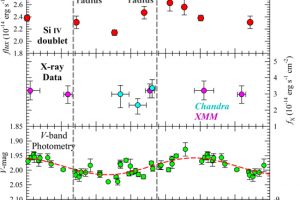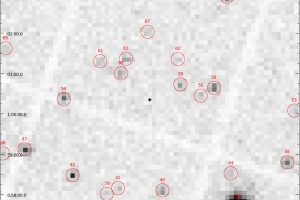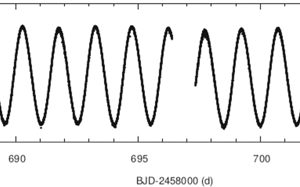The binary fraction in Cepheids revealed by X-ray observations. The paper: “X-Rays in Cepheids: Identifying Low-mass Companions of Intermediate-mass Stars” of N. R. Evans (SAO) recently appeared on ApJ

Cepheids are important stars for the well-known relation between the period of their pulsations and their intrinsic luminosities. These stars are in fact characterized by regular pulsations whose period increases linearly with their absolute magnitude. Cepheids have a mass of about 5 solar masses, thus their progenitors are B stars in Main Sequence. However, their evolutionary path can be affected
» Read more

